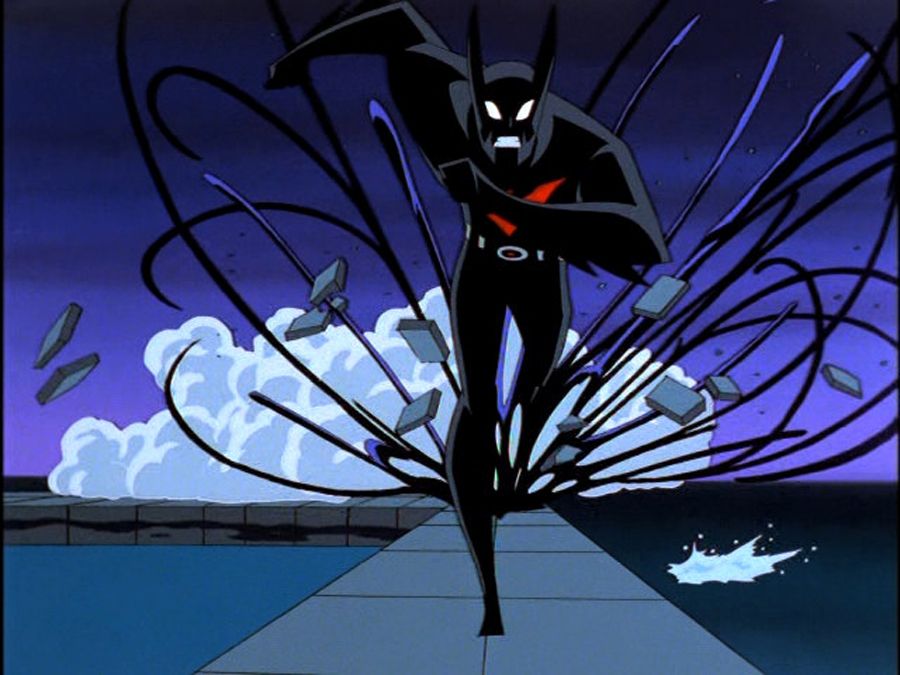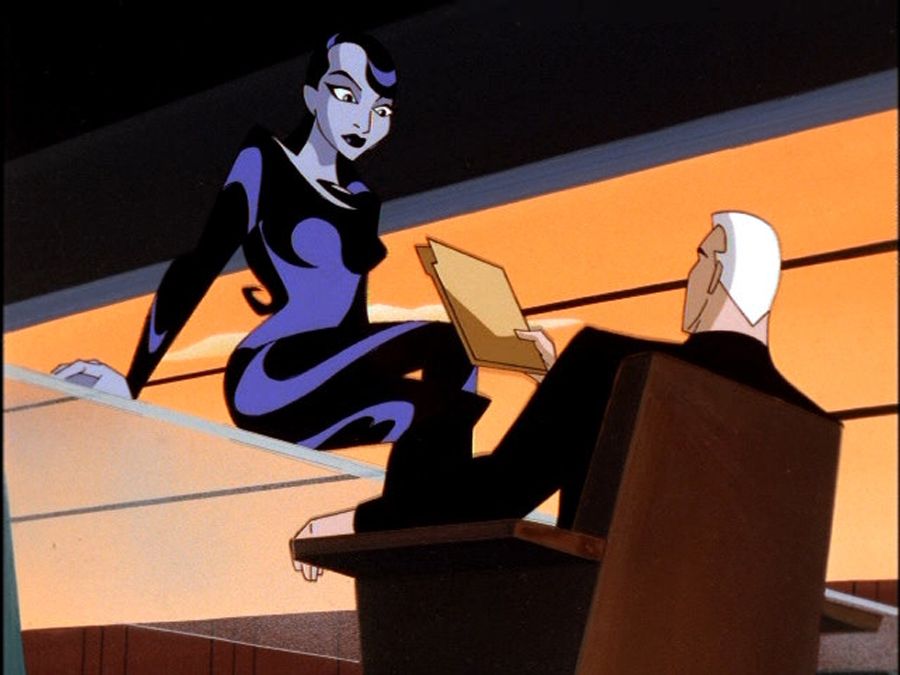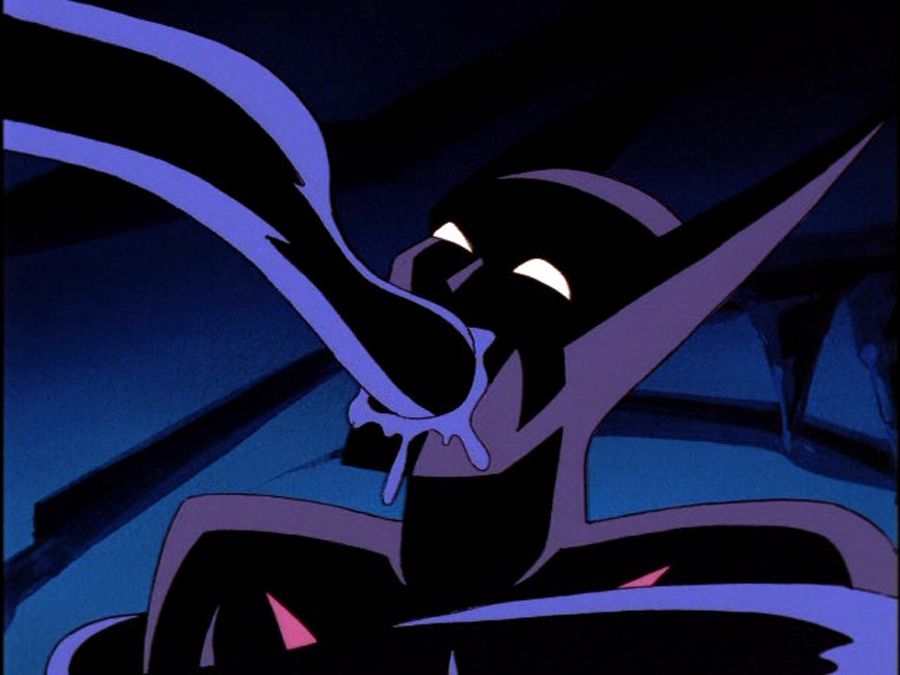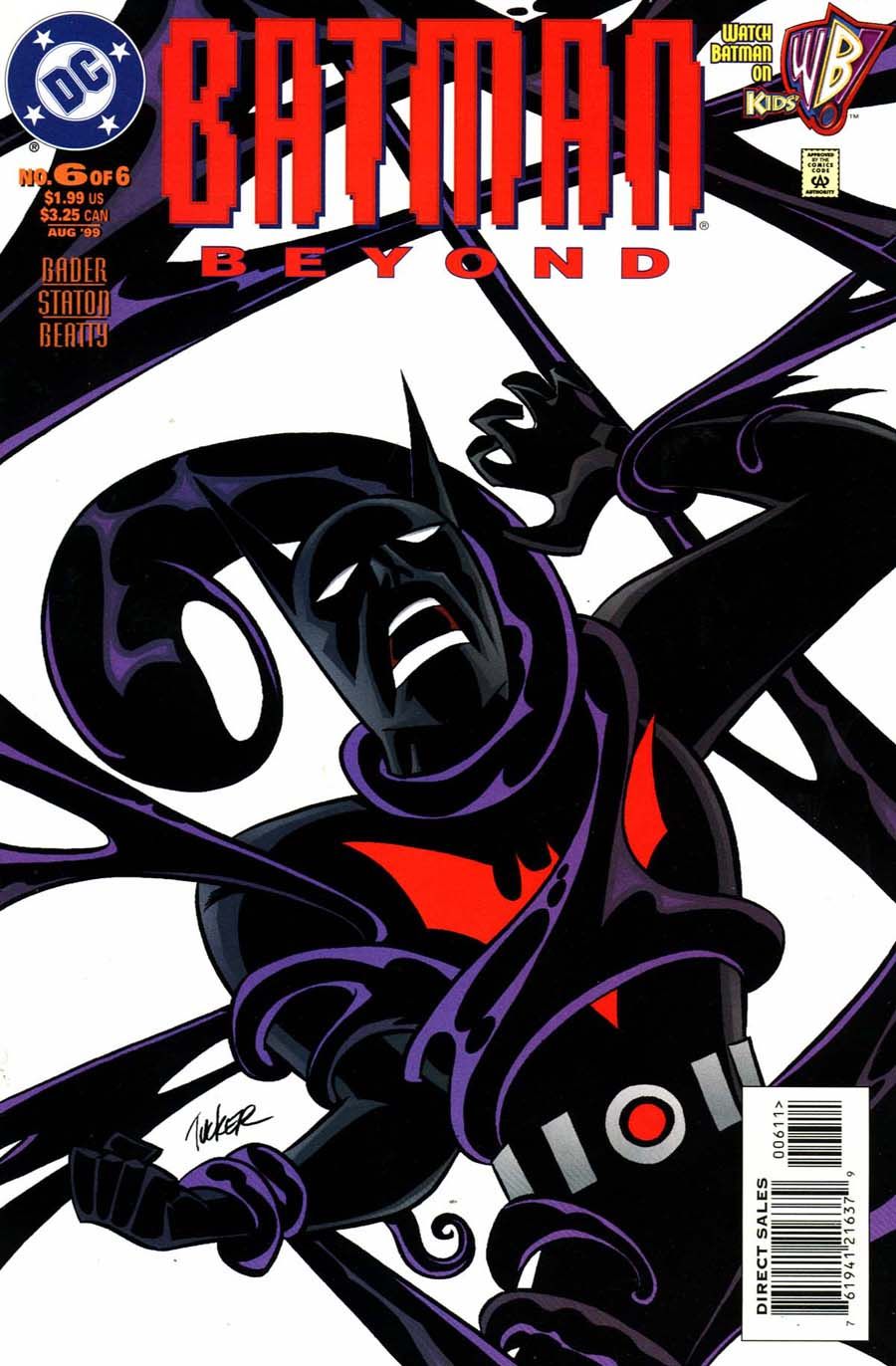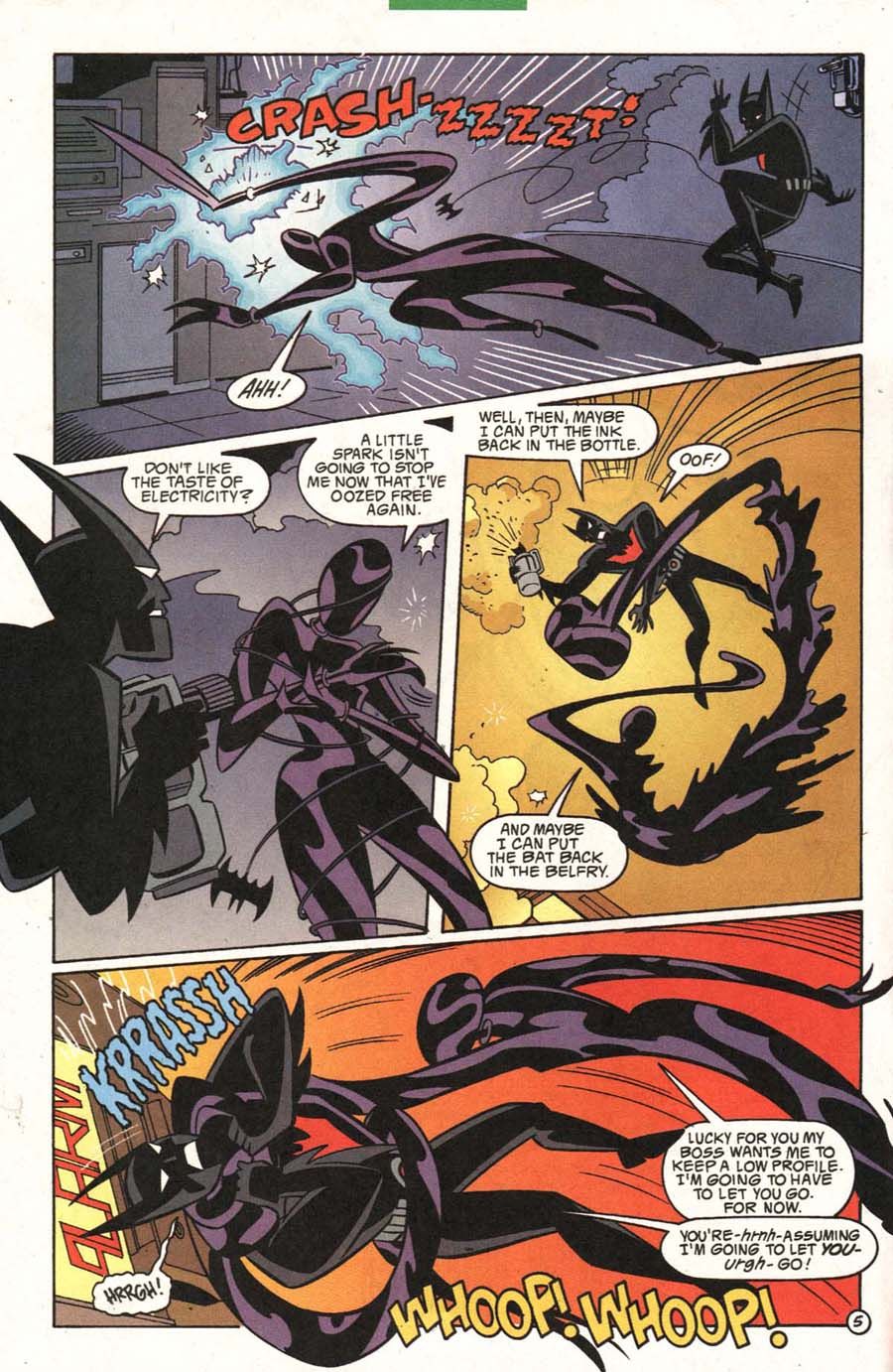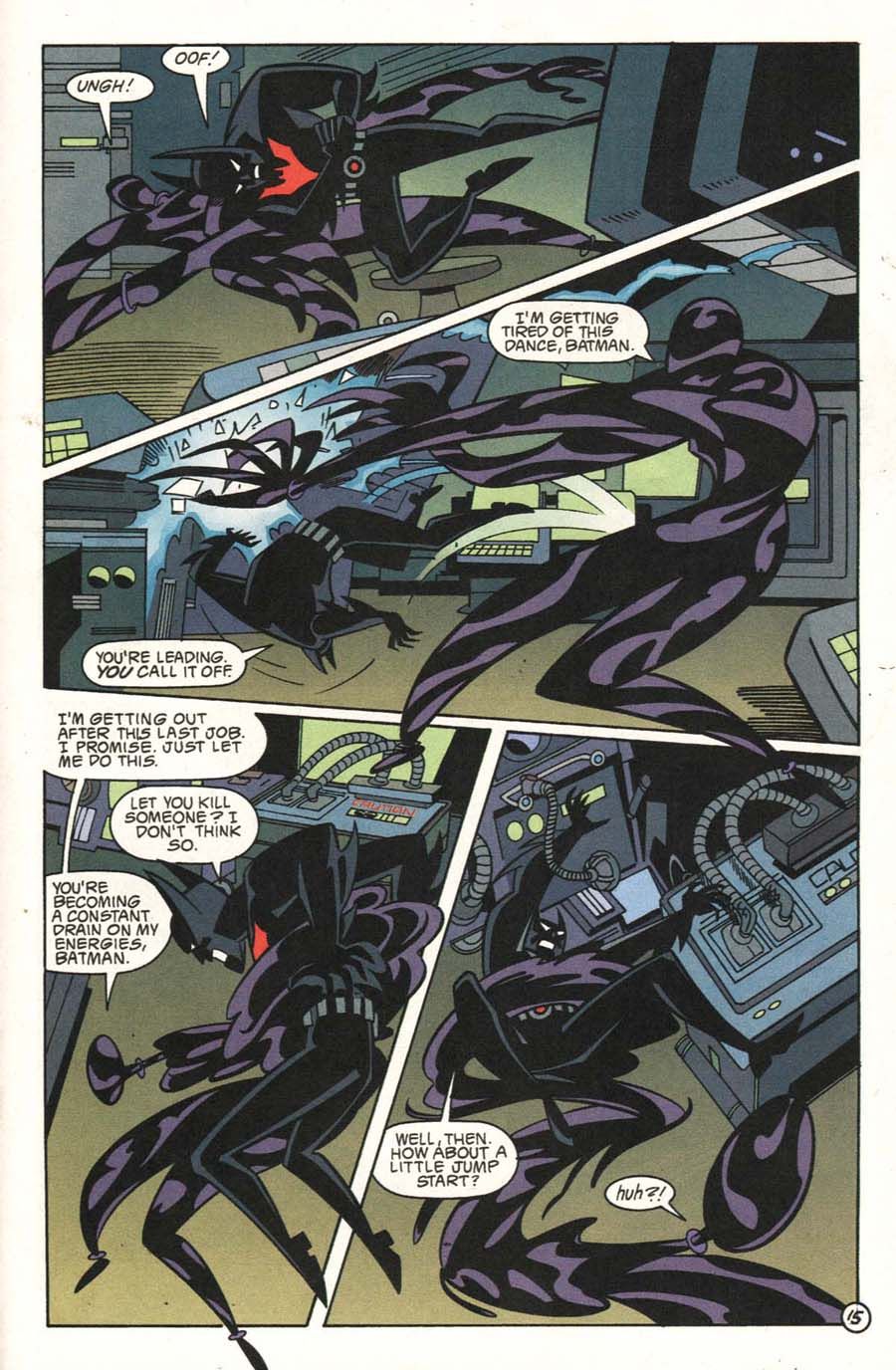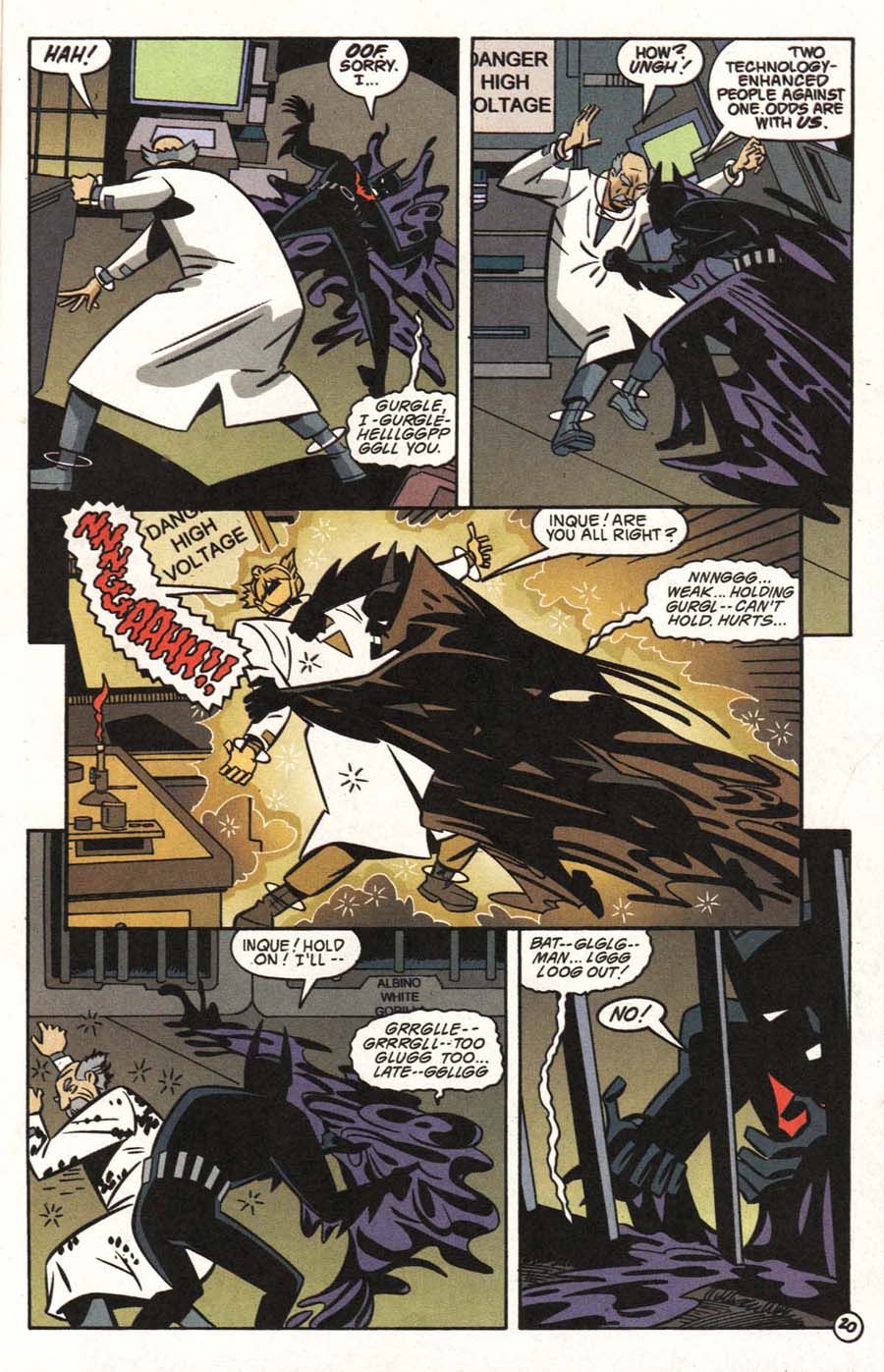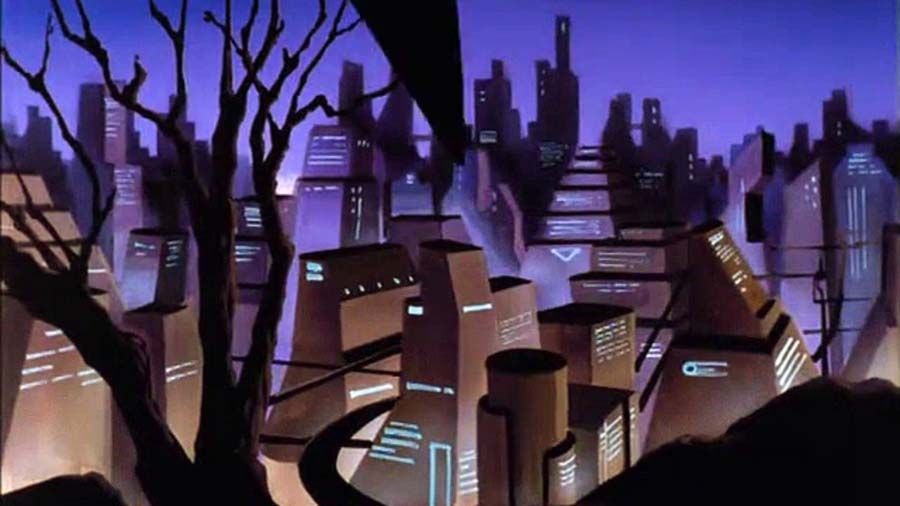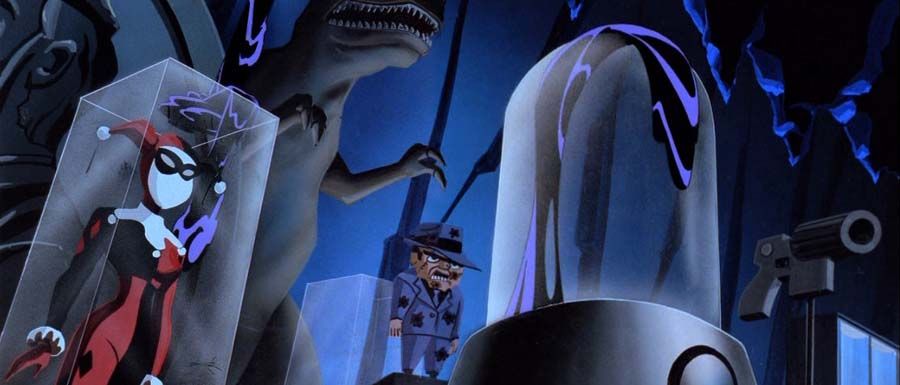Welcome to the 21st edition of "Adventure(s) Time," where a fan-favorite animated series is paired with a more obscure issue of its comic tie-in. Previous installments have focused on Batman: The Animated Series, The New Batman Adventures and Superman: The Animated Series. All three series had long-running tie-in comics, with some considered classics by the more devoted fans of the DC Animated Universe. There was another title, starring a solo hero, from this line that we haven’t addressed yet. And because it seemed unlikely that mainstream DC would ever devote a series to this hero, the qualifier “Adventures” was never added to the title of his comic.
You might’ve guessed that I’m referring to Batman Beyond.
RELATED: When Catwoman Refused to Reform on Batman: The Animated Series
The initial Batman Beyond comic was conceived as a miniseries, with the first two issues adapting the pilot episode, and the following four telling new stories set in a futuristic Gotham City. In this reality, Bruce Wayne is years past retirement age, his business is in the hands of the corrupt Derek Powers, and perhaps against his better judgment, he’s agreed to train a borderline juvenile delinquent named Terry McGinnis as the new Batman.
DC wasn’t sure how fans would respond to the tie-in, but reaction was positive, leading to a regular series that lasted for a few years. And, as likely everyone knows, affection for the property led DC to occasionally feature Batman Beyond in some guest spots in its mainstream comics, and to later grant him his own series.
RELATED: Which Batman: The Animated Series Episode Is An Overlooked Classic?
The origin for Batman Beyond (I’m calling him this for the sake of clarity, as he’s simply “Batman” on the show) has the father of teenager Terry McGinnis killed on the orders of Derek Powers, and Terry seeking justice in the high-tech Batman suit he’s stolen from Bruce Wayne. Terry continues on as Batman, under Bruce’s tutelage, and faces his own rogues gallery. One of his more persistent villains, appearing on the series more often than even Derek Powers’ evil alter ego, is the polymorph known as Inque.
Inque was introduced in the third episode "Black Out," premiering on Jan. 31, 1999 (it was written by Robert Goodman and directed by Dan Riba, who worked on numerous Batman and Superman episodes). The story opens with a blob of what appears to be sentient ink committing industrial sabotage at a building owned by Foxteca, a firm belonging to Bruce’s friend Lucius Fox, Jr. The audience learns soon enough that the malevolent Derek Powers is behind the attacks, and the blob of black ink is actually a sultry shapeshifter known as Inque.
More Foxteca installations are attacked, causing Terry to abandon his girlfriend Dana at a school sporting event to investigate as Batman. (The “Terry bails on Dana” trope will be exploited so often on this series, even the producers grow tired of it.) Terry, not at all prepared for Inque’s powers, loses his first encounter with the villain and is unable to prevent her escape.
RELATED: Dick Grayson's Homecoming on Batman: The Animated Series
During their next encounter, Terry learns Inque is afraid of water, although this information doesn’t prevent him from losing their rematch. Derek Powers, irritated by the hero’s meddling, orders her to kill both this new Batman and his mentor. Later that night, Inque disguises herself as the outer layer of the Batmobile (which is of course a flying car now, because that’s what we have in the future), and does the unthinkable: She sneaks into the Batcave.
An absolutely brutal fight follows, taking advantage of the noticeably lax censorship the creators once enjoyed at the WB Network. This is the episode that has Inque subduing Batman by pouring her liquefied body down his throat.
The earliest episodes could’ve gone out of their way to sell the new Batman, painting him as ultra-competent and clearly superior to his predecessor. Instead, Batman Beyond took a different route, with the teen Batman bailed out by his aging mentor in one of his first outings. (In fact, Inque seems to get the better of Terry in all of her appearances.) Appearing in the guise of his childhood hero, the Gray Ghost, Bruce Wayne uses a firehouse to rescue Terry from Inque. That isn’t enough to stop her, and she nearly causes the cave to collapse. However, Bruce uses another memento from the original Batman run -- Mr. Freeze’s freeze gun -- to finish her.
Inque’s liquescent body is frozen, then shattered, and her broken remains are left in a plastic bag outside the offices of a Gotham City police commissioner ... whom we learn is now Barbara Gordon.
Likely no one thought this would be Inque’s final appearance, as she seemed to be a favorite of the producers from the beginning. And given that she’s one of the first villains created for the new Batman, it wasn’t a huge surprise to see her appear in the tie-in comic so quickly.
Batman Beyond #6 (August 1999) marks the comics debut of Inque, in a story written by Hilary J. Bader and penciled by Joe Staton. The awesome cover is courtesy of James Tucker; like all of the original covers from the miniseries, the artist responsible is an animator on the show.
Picking up where "Black Out" left off, we see a newly reconstituted Inque sneaking into another state-of-the-art facility, this time the laboratory of Gamma Tech, which is on the verge of a “major bio-technology” breakthrough. After sneaking past the guards, Inque illegally transmits data to a mystery man. Batman has been staking the labs out, based on Bruce Wayne’s hunch, and is shocked to discover Inque is whole again.
Like almost all of their confrontations, Inque is able to escape from Batman. Later, in the Batcave, Bruce reveals to Terry that he kept a sample of Inque’s body in a test tube, and after weeks of dormancy, it’s suddenly become active again. The scene cuts to another lab, this one the underground facilities of a mysterious scientist, one who’s used a series of implants to provide Inque a solid form again. He’s about as nasty as any evil generic mad scientist can be, electrocuting Inque as punishment for drawing attention to herself during her fight with Batman.
RELATED: Batman: The Animated Series Producer Alan Burnett Retires
Her next mission is to infiltrate the hospital and kill a patient named Xercan Moldavo. He’s the inventor of the technology Inque was investigating, and apparently he must die to ensure this bio-technology can never be replicated. Following Bruce’s guidance, Batman realizes that any portion of Inque is compelled to be reunited with her body. Following a trace she left behind, Batman tracks Inque to the hospital’s database. Hey, will this fight end in another inconclusive draw?
Of course it does. But there is one unexpected moment: Before leaving, Inque asks Batman for help. Following another trail left by Inque, Batman locates her inside the mystery scientist’s lab, where he’s sadistically torturing her yet again. Batman intervenes, and discovers the elderly scientist has been experimenting on himself with bio-implants, growing impossibly strong. Inque is barely able to stay cohesive, thanks to the scientist’s attack, but she has just enough consistency to wrap herself around Batman and provide him an extra dose of strength.
The mad scientist is taken away, his animal test subjects are rescued, but Inque has once again disappeared. Batman assumes she didn’t make it, but Bruce is confident that Inque will return yet again. Fans with a good memory might recall Bruce making similar statements after Clayface’s apparent death in the villain’s debut appearance on Batman: The Animated Series. Inque’s powers are reminiscent of Clayface’s, even though the visual design is clearly very different. The producers of the series were reluctant to give Terry revamped versions of Batman’s existing foes, but did draw inspiration from certain elements of a few villains, and the oozy nature of Inque’s powers do seem to be a callback to Clayface.
RELATED: The 15 Worst Episodes of Batman: The Animated Series
Clayface isn’t the only villain that viewers associate with Inque, however. When these episodes were originally airing, many fans online became convinced that Batman Beyond was drawing much of its inspiration from Marvel’s Spider-Man franchise. (Perhaps too much inspiration.) We’ll likely get into this deeper in future installments, but in regards of Inque, the concept of an evil black ooze that can change form and blend into surrounding environments certainly brought to mind the sinister alien symbiote that Spider-Man first encountered in Secret Wars. Inque clearly isn’t a direct clone of Venom, but the way she uses her powers is reminiscent of the way Venom has utilized the alien symbiote in the past.
Another connection you might draw, and this one is a bit of stretch, is the decision to make both villains more sympathetic as time went on. There’s a hint of this in the tie-in comic; and since Hilary J. Bader was also a writer for the series, maybe she was foreshadowing ideas the producers were already developing. Inque seems unlikely to become the star of her own solo series and movie, however.
The Wrap-Up
Design-y
Setting Batman Beyond decades in the future gave the producers free rein to create a unique setting for the series. I think some of the fashion and color choices are questionable, but the new Gotham skylines do look impressive.
It’s also nice to see callbacks to the earlier Batman cartoons in the future Batcave. Who ever thought the Gray Ghost would be homaged on the series, let alone in only the third episode?
Continuity Notes
When Inque makes her second appearance on the cartoon in the episode "Disappearing Inque," Terry and Bruce are concerned she might find her way back to the Batcave. In her comics return, they don’t even consider the possibility. Also, "Disappearing Inque" opens with Inque as a prisoner in a cryogenics lab, which would difficult to reconcile with the ending of the tie-in comic.
Hey, I Know That Voice
Shannon Kenny, who's done various voiceover roles and also appeared in the Seinfeld episode "The Susie," voices Inque. (She's also married to Nestor Carbonell from Lost and The Dark Knight.) Kevin Conroy returns as Bruce Wayne, altering his voice just enough to age it around forty years. Terry McGinnis is portrayed by Will Friedle, a teen heartthrob actor who wasn’t known as a voiceover performer at this time, but has gone on to appear in dozens of animated projects. Friedle is really quite amazing at altering his voice (according to legend, he took up smoking in order to deepen his voice and give his Batman more of a growl), appearing as macho heroes, wisecracking devil-may-care adventurers, and wimpy teenage boys over the years. As demonstrated on the Batman Beyond DVDs, Friedle is also a hardcore fan of the DC Animated Universe, and can even school the producers with his knowledge of DCAU continuity.
Battle of the Ooze
To be fair to Batman Beyond, the comic, Joe Staton captures the models from the show perfectly (in fact, they look a little more polished in the comic), and he renders some fantastic scenes with Inque. But nothing, absolutely nothing, is ever going to compete with the sickening image of Inque’s oozy mess of a body filling Batman’s throat. It’s as disgusting as anything “kids’ TV” has ever brought us, and unless Inque ever appears in a Vertigo comic, it’s hard to conceive of any use of her powers more nauseating than this.
That’s all for now. Special thanks to the World's Finest crew for research aid. If you have any suggestions for an animated episode and a tie-in comic with similar themes, just leave a comment or contact me on Twitter.


